I am using glmer with a logit link for a gaussian error model.
When I try obtaining the confidence intervals, using either profile or the boot method with the confint option, I obtain an error for use of profile likelihood, and with bootstrapping:
> Profile: Computing profile confidence intervals ... Error in
> names(opt) <- profnames(fm, signames) : 'names' attribute [2] must
> be the same length as the vector [1]
>
> Boot: Error in if (const(t, min(1e-08, mean(t, na.rm = TRUE)/1e+06)))
> { : missing value where TRUE/FALSE needed In addition: Warning
> message: In bootMer(object, FUN = FUN, nsim = nsim, ...) : some
> bootstrap runs failed (9999/10000)
I have looked at online suggestions on how to overcome the profile issue, by installing the lme4 development tool and I have also eliminated all NAs from the dataset. However, in both instances, I still receive the same two error messages.
Is anybody able to offer any help as to whether this is a lme4 issue, or whether it's more fundamental.
Here is code to produce the first 20 observations and the model format:
df2 <- data.frame(
prop1 = c(0.46, 0.471, 0.458, 0.764, 0.742, 0.746, 0.569, 0.45, 0.491, 0.467, 0.464,
0.556, 0.584, 0.478, 0.456, 0.46, 0.493, 0.704, 0.693, 0.651),
prop2 = c(0.458, 0.438, 0.453, 0.731, 0.738, 0.722, 0.613, 0.498, 0.452, 0.451, 0.447,
0.48, 0.576, 0.484, 0.473, 0.467, 0.467, 0.722, 0.707, 0.709),
site = c(1,1,2,3,3,3,4,4,4,4,4,5,5,5,6,6,7,8,8,8)
)
df2$site <- factor(df2$site)
model <- glmer(prop2 ~ prop1 + (1|site),
data=df2, family=gaussian(link="logit"))
summary(model)
The response is a proportion (0,1), as is the covariate. I have used the logit link to keep the expected values of the response bound between (0,1), rather than being unbound with the normal, though this data fits a LMM reasonably well.
I will also analyse the difference between the two proportions, for which I expect some differences (and fitted values) to violate the (0,1) boundary - so I will model this with either an identity link with gaussian error, or logit link on the scaled difference (coercing this to be (0,1)).
Also, given that there may only be 1-5 records per site, I will naturally consider running linear regression or GLM (proportions), and treat site as a fixed effect in the modelling process, if the estimate of the random effects variance is zero (or very small).
